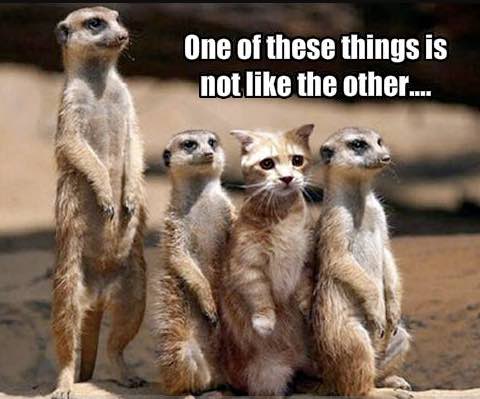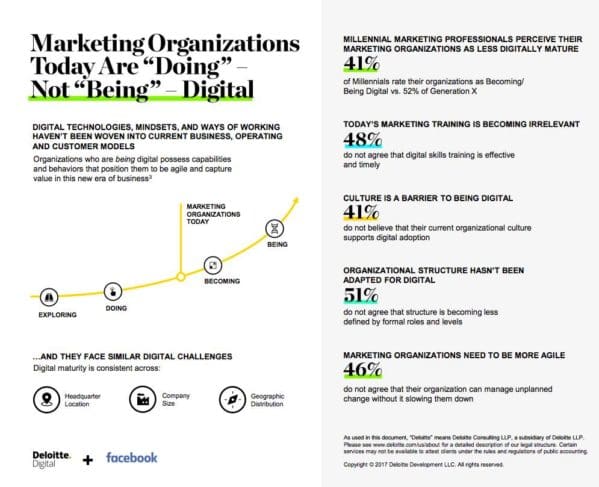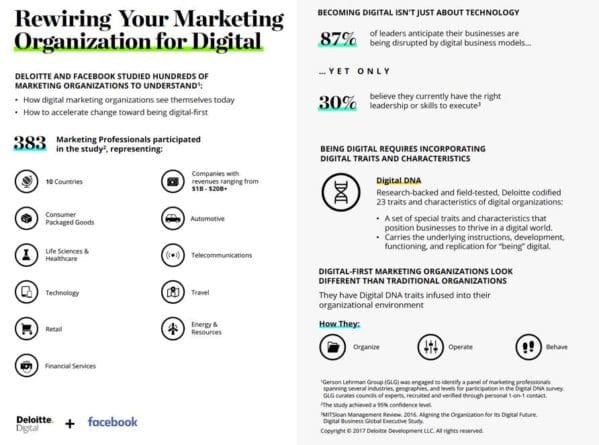Not to get all existential on your or anything, but it’s the difference between “Being” and “Doing”

It’s the difference between a cat … and a meerkat. Between an organization that pays lip service to the idea of engaging with an audience on digital platforms (while secretly wishing everything would go back to The Way Things Were) … and one that lives and breathes comfortably on a variety of platforms, while still maintaining its core ethos.
Recently, while putting the finishing touches on a Great Big Important Research Project For A Huge Client, I got into a discussion with Janine Warner, my partner in all things analog and digital, over nomenclature. What do we call these guys? Are they all digital entrepreneurs? News startups? New media players? Journalists-turned-geeks? Fact-based info-ventures? Digital natives?
It’s not exactly an earth-shattering insight, but what we call things deeply influences how we think about them. “Death tax” instead of “inheritance tax.” “Right-sizing employee headcount” instead of “firing workers to boost profits.” “Undocumented feature” instead of “bug.”Â
So it’s not just one of those tiresome go-rounds between self-important geeks over how to pronounce “GIF.”
There are now thousands of journalists, activists, and plain old ordinary citizens with a passion for discovering and sharing the truth now using the vast democratization powers of the internet to reach wide (or narrow) audiences.
Some of these people are recruiting dozens (or even hundreds) of other like-minded people to help them build large & complex organizations, with responsive websites, vibrant social media feeds, slick multimedia, and multi-million-dollar revenues.
Others are working all on their own, concentrating on one subject, and (depending on your viewpoint) crusading to bring attention to formerly ignored subjects, geographic areas, or populations.
Some exist only on social media. Some exist only as mobile apps. Some have millions of pageviews a day. Some barely crack 10,000 a month.
But one essential characteristic we decided upon, separates these organizations we are studying, from the digital arms of the New York Times, ESPN, the Hollywood Reporter, etc. That is that the organizations we are studying were born using the internet, or platforms on the internet, as their first choice and means of contact with their audience.
Marketers and advertisers are trying to figure out what is a Digital Native too
So it was with great interest that I stumbled upon a joint research project by Facebook and the consulting giant Deloitte.Â
It turns that there there is a significant difference between organizations that have digital “baked into their DNA.” I’ve seen this first-hand, when trying to help publishers around the world build up their digital capabilities. Even with the best of intentions, these efforts have been very frustrating to me, as when the digital side starts doing well, the reaction of the traditional side is to feel threatened and want to make them “come home to daddy!” (said in best deep menacing voice).
Here’s some of the characteristics of an organization that is “doing digital” — please note that these ARE NOT bad things. In fact, they represent a good-faith effort at trying to adapt to the fundamental changes in news, advertising, marketing & so much more:
-
Dynamic skill requirements. Today, skill requirements are constantly changing. To be effective, organizations need skills that can be used in a variety of ways to tackle new challenges and circumstances. This requires the right kind of training.
-
Agility. Maturing digital organizations need the heightened awareness and flexibility to quickly adapt to unexpected changes in the marketplace. This requires tools, processes and policies that make it easy to work in a rapidly changing environment.
-
Fluidity. Fluidity is the ability to move with ease from one situation to the next, even in the face of shifting talent needs, resources and operating models. It is closely related to agility, but centers more around anticipated changes (although the changes, while anticipated, might not be entirely predictable).
-
Constant disruption. In our current business environment, disruption is a constant; however, some disruptions are truly important and some are just noise. Marketing organizations must be able to tell the difference and then have the capabilities and culture to respond appropriately.
-
Real-time and on-demand. Success today requires the ability to make changes in real time based on feedback from customers and stakeholders and to provide information and services on demand—whenever and wherever people need them.
-
Fail early, fail fast, learn faster. Maturing digital organizations aren’t afraid to fail; they crank out solutions as quickly as possible, make improvements through rapid iteration and actively learn from their mistakes. Failure is equated with creativity and innovation.
Characteristics of a Digital Native
So what actually works? Well, according to Facebook and Deloitte, it basically includes not being wedded to your existing success (perhaps by not having to make balloon payments on the debt accrued when ABC was bought by CapCities was bought by Disney, for example), by being welcoming of your audience rather than viewing them as filthy, ignorant infidels, and by being open to collaborating with rivals on a project that benefits the both of you. The digital natives that we studied are nimble, unafraid of change, and connected to their audiences as a deep level. Here are some of the observations from the report
-
Continuous ecosystem disruption. In a digital world, organizations operate as ecosystems—not self-contained entities—enabling them to quickly and constantly reconfigure themselves in response to ongoing societal, technological and market shifts.
-
Increased customer involvement. Maturing digital organizations actively engage with customers, capturing feedback on products and services and gathering real-time data on every interaction.
-
Intentionally collaborative. In the current business environment, collaboration is key—creating alignment across the ecosystem and helping to deliver an improved experience for customers and employees alike. According to the study, this is the area where marketing organizations have made the most progress toward being digital.
Or, to put it another way…


